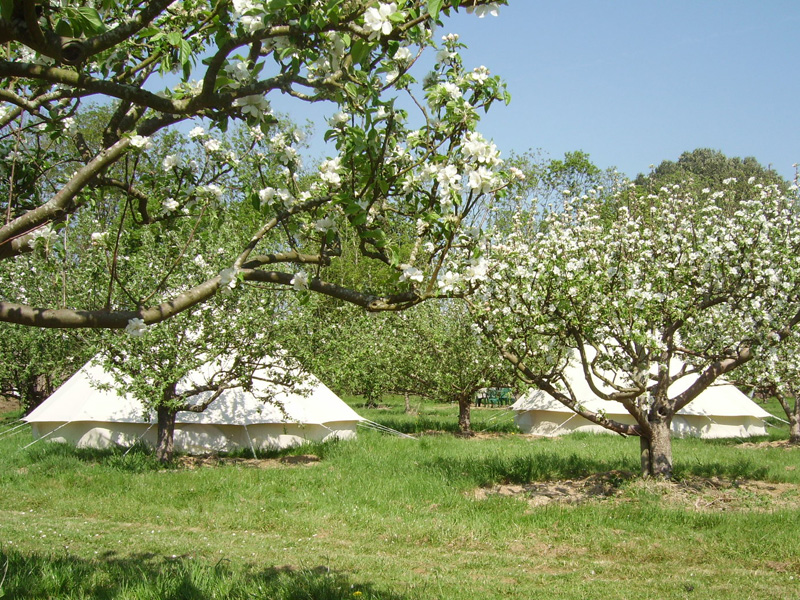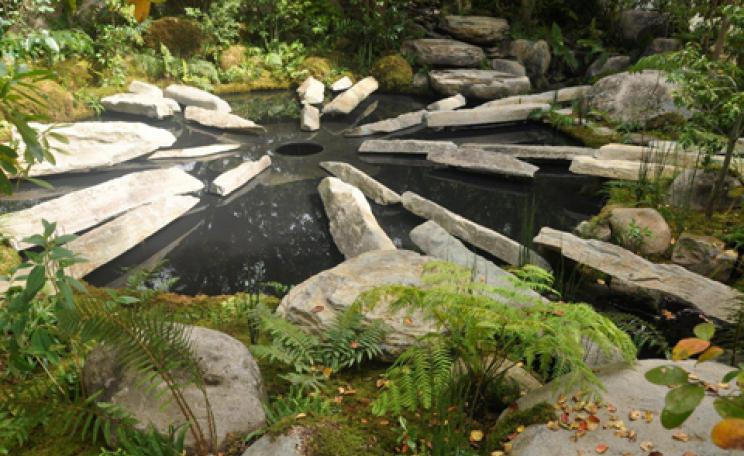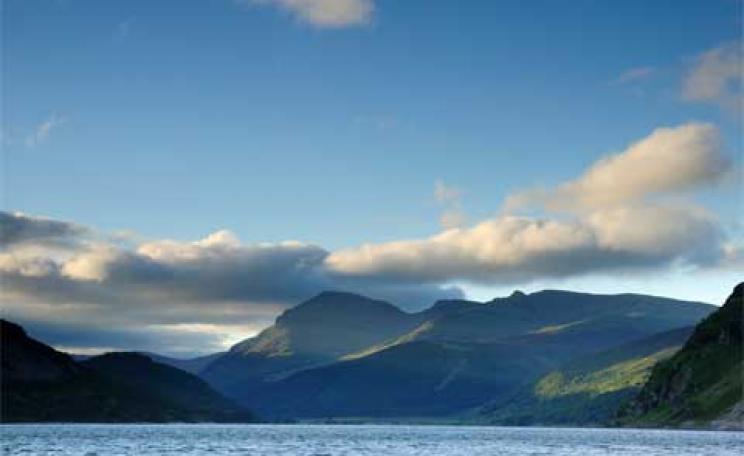Fly a kite
Kite flying is an excuse to get thoroughly windswept and to lose yourself watching clouds shape-shift across the sky. Wait for the wind to pick up, then walk to the top of the highest grassy hill you can find. Large open spaces are best, away from trees and pylons. Catch your breath and admire the view.
Unpack your kite and unravel your strings. Lick your finger and test the direction the breeze is blowing in. Wait for what feels like a good gust and then launch your kite into the wind. Feel immense pride as it glides through the air with beauty and grace.
Lift, gravity, thrust and drag are the forces at work when you fly a kite. Lift is an upward force created by wind pressure on the face of the kite, which makes the kite rise and keeps it in the air. Thrust is the power of the wind that creates lift. Gravity is the downward force on the kite, which works against lift. Drag is the air resistance to the kite as it travels forward. To fly, a kite needs to have enough lift and thrust to overcome gravity and drag.
It's easy to make your own kite out of things you might find around the house. You could use a plastic bag, or perhaps the fabric from a broken umbrella, stretched across a frame constructed from lightweight bamboo sticks or dowelling. Tie pretty old ribbons on to a length of string for a tail.
Go rock pooling
It's easy to lose hours practising the art of rock pooling. Armed with an eagle eye, and perhaps a bucket and small fishing net, the keen rock pooler can discover an enormous number of creatures living in the tiniest puddles of water. Any beach with rocks will be full of rock pools once the tide's gone out. These miniature underwater Amazons host blooming and blood-red sea anemones, creative hermit crabs, steadfast limpets and see-through shrimps. Rock pooling mainly requires patience and peering, letting your eyes slowly travel around the seaweed-fringed twists and turns of the underwater miniature cliffs and caverns. Gently cast your net through the pool and release the contents into a bucket filled with seawater.
Try to identify the different species before you return them to the pool where you found them. Rock pooling is an important way of surveying coastal areas and monitoring the health of marine wildlife populations. Taking part in an organised coastal survey can produce records that aid conservationists' work to protect important marine and coastal habitats.
You might find ...
- Crustaceans, like barnacles and common prawns, edible, hermit, shore, spider and velvet swimming crabs
- Molluscs,like limpets, mussels, periwinkles and dog whelks
- Anemones,like beadlet, strawberry and snakelock anemones
- Starfish,like cushion starfish and brittle stars
- Fish,like pipefish and shanny
Press flowers
Have you ever looked at the profusion of flowers in June and July and wished you could capture some of that summer spirit for the cold winter months? Pressing flowers is a great way to keep a bit of summertime magic in your life. Shop-bought flower presses are great but pressing flowers doesn't have to involve expensive equipment. You can layer up cardboard and blotting paper in a sandwich to make your own flower press. Layer it: cardboard, blotting paper, flower, blotting paper, cardboard and repeat. Your sandwich needs to be weighed down between two heavy books for the best and flattest end results. Or if you want to keep it really simple, just pop your flowers in between
the pages of an old book. An old phone book works well. Come back in a month and your flowers will be ready.
Try to choose flowers which have no fleshy parts. Grasses can create interesting shapes and textures and larger flowers like roses work better pressed as individual petals. Have fun and experiment.
What to do with your pressed flowers
- Make your own flower design and frame it
- Make home-made greeting cards
- Make your own flowery bookmark
Go Wild Camping
Forget luxury yurts and all-singing, all-dancing motor homes: wild camping is the ultimate in minimalistic travel. It's about leaving the madding crowd far behind and eschewing hot showers and flushing loos. To get the most out of a wild camping trip you need to be well prepared and aware of laws around camping and access to the countryside, so it's worth doing your research before you set off.
Plan your trip, study some maps and make sure you know about the area you are heading for. Choose a time when the weather is fine and the evenings long. Pack a lightweight tent, sleeping bag and bare essentials in a backpack and set out. Find a suitable spot, pitch up and watch night roll in. Breakfast in the dew, pack up and move on.
Leaving the romance of it all behind, there are a few things to consider before you camp wild. In England and Wales there's no legal right to do it and permission should be sought from landowners. This is not always practical and in mountainous areas and hill land, wild camping is generally accepted as long as it's for a limited time, is discreet - out of sight of houses and farms - and is low impact. If the landowner asks you to move on you should, but seasoned wild campers say they rarely are.
Wild camping is about respecting your environment. The Forestry Commission and National Trust are clear that they don't allow wild camping on their land. Nature reserves are not good places for wild camping as they are often environmentally very sensitive and protect endangered wildlife. Some National Parks welcome wild camping, as long as you act responsibly but you should still get permission from landowners.
Helpfully, the Dartmoor National Park Authority have a map of areas of common ground for wild camping and in Wales the Brecon Beacons National Park provides a list of farms that welcome wild campers. The law is different in Scotland, where wild camping is completely legal and well accepted.
Essential packing
- A tent
- A map
- Insect repellent
- Warm and waterproof clothes
- A blanket or sleeping bag
- Drinking water
The wild camping code
- Only light fires if you have permission
- Remember people make a living from the land
- Respect wildlife
- Keep quiet and be discreet
- Wipe away all traces of your stay. Leave the land exactly as you found it
Play Poohsticks
It's easy to keep yourself entertained if you can find some flowing water and a few sticks. Select your stick (make sure you choose a winner), while your opponents do likewise. Each stick should have its own distinct personality, so that you can distinguish your twig from everyone else's. Pick a starting point upriver and agree upon a finishing line downriver. It's more fun if the sticks have to pass under a bridge or over obstacles, like some rocks or a small waterfall.
On the count of three, everyone launches their poohstick into the water. Chase the sticks as they race along. Yell encouragement. Curse loudly when your stick gets stuck. The winner is the owner of the stick that crosses the finish line first. Be prepared to argue if it's a close call and then gloat massively if you emerge victorious. Continue to play as you make your way down the river, until you all fall out.
Poohsticks was first played by that hero of children's literature, Winnie the Pooh, and his friends Christopher Robin, Eeyore and Tigger. Author A.A. Milne originally invented the game to keep his son entertained. Traditionally poohsticks is played by dropping sticks from the upstream side of a bridge and seeing which stick emerges first on the other side.
This is an extract from 152 Wild things to do by the Wildlife Trusts (£12.99, Elliott & Thompson books). Ecologist readers can get 30 per cent off the RRP and free P&P by phoning 01256 302699 and quoting the code 4FN.
| READ MORE... | |
 |
GREEN LIVING Secret getaway: Skomer Island Want to mix a little conservation with your holiday? Volunteering on Skomer Island, a haven for seabirds and nature lovers, is a rewarding experience says Eifion Rees |
 |
GREEN LIVING UK holidays: Five of the best green getaways A converted watermill in Yorkshire, yurts in the Isle of Wight, an eco hostel in the Scottish highlands, a 16th century horticultural farmhouse in Kent and a Romany gypsy caravan in Wales... |
 |
GREEN LIVING Five eco mini breaks for green-minded travellers Muck in and tuck in with these green, weekend away ideas |
 |
GREEN LIVING Where am I? The world beyond sat-navs Maps have lost their initial purpose of orientating lost travellers. Today they mean much more: they are tools to help re-connect us to the natural world, writes Trevor Critchley |
 |
GREEN LIVING An industrial antidote: yurts and Wordsworth in the Lakes A yurt holiday near Wordsworth's ancestral home offers a chance to discover the Lake District's powerful beauty |





